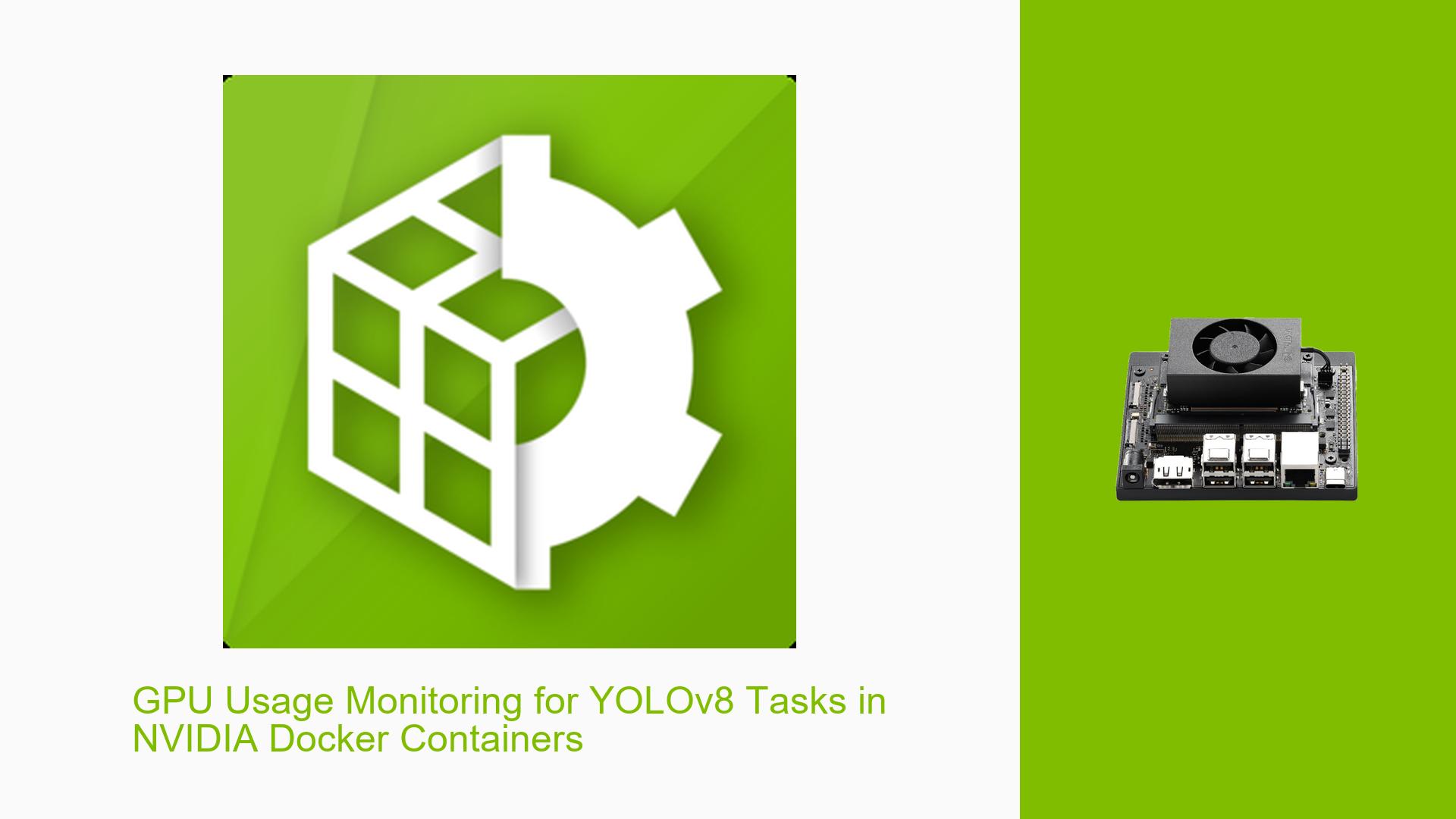GPU Usage Monitoring for YOLOv8 Tasks in NVIDIA Docker Containers
Issue Overview
Users are seeking a method to monitor GPU usage for individual YOLOv8 tasks running in separate NVIDIA Docker containers on a Jetson Orin Nano Dev board. The main challenges include:
- Viewing GPU utilization for specific containers rather than overall system usage
- Inferring GPU usage of individual processes from total GPU usage statistics
- Lack of clarity on available tools or commands for granular GPU monitoring in containerized environments
This issue impacts users who need to optimize performance, debug resource allocation, or manage multiple YOLOv8 workloads efficiently within Docker containers on Jetson platforms.
Possible Causes
- Limited visibility into container-specific resource usage: Docker’s isolation may obscure individual container GPU metrics.
- Inadequate monitoring tools: Default system utilities might not provide container-level GPU statistics.
- Complexity of NVIDIA Docker implementation: The interaction between NVIDIA Docker, the host GPU, and containers may complicate resource tracking.
- YOLOv8 resource allocation: The way YOLOv8 utilizes GPU resources within containers might not be easily observable through standard methods.
Troubleshooting Steps, Solutions & Fixes
-
Use NVIDIA Nsight Compute for profiling:
- Install NVIDIA Nsight Compute on your Jetson Orin Nano Dev board.
- Launch your YOLOv8 tasks within the NVIDIA Docker containers.
- Use Nsight Compute to profile the applications:
nsys profile -t cuda,osrt,nvtx,cublas,cudnn -o my_profile_report ./my_yolov8_app - Analyze the generated report to view detailed GPU usage information for each container.
-
Implement container-aware GPU monitoring:
- Use NVIDIA’s DCGM (Data Center GPU Manager) if available for your Jetson platform:
dcgmi dmon -e 155,150 -c 0 - This command monitors GPU utilization and memory usage for all GPUs.
- Use NVIDIA’s DCGM (Data Center GPU Manager) if available for your Jetson platform:
-
Modify Docker run commands:
- When starting your containers, use the
--gpusflag to specify GPU allocation:docker run --gpus 'device=0' -it my_yolov8_container - This ensures proper GPU assignment and may improve monitoring capabilities.
- When starting your containers, use the
-
Leverage NVIDIA System Management Interface:
- Use
nvidia-smiwith Docker container IDs to view GPU utilization:nvidia-smi -i 0 -q -d UTILIZATION -l - Cross-reference the GPU process IDs with Docker container IDs to match usage to specific containers.
- Use
-
Explore third-party monitoring solutions:
- Consider using tools like cAdvisor or Prometheus with NVIDIA GPU exporter for more comprehensive container and GPU monitoring.
-
Custom logging implementation:
- Modify your YOLOv8 application to log its own GPU usage metrics using PyTorch’s
torch.cudafunctions:import torch print(f"GPU Memory Usage: {torch.cuda.memory_allocated() / 1e6:.2f} MB") - Implement this logging at regular intervals or key points in your application.
- Modify your YOLOv8 application to log its own GPU usage metrics using PyTorch’s
-
Use
tegrastatscreatively:- While
tegrastatsprovides overall GPU usage, you can use it in conjunction with other methods:tegrastats --interval 1000 --logfile gpu_usage.log - Compare the timestamps of high GPU usage in the log with your container’s operation times.
- While
-
Consult NVIDIA Developer Forums:
- For Jetson-specific issues or advanced monitoring techniques, engage with the NVIDIA Developer community for tailored solutions.
Remember that the effectiveness of these methods may vary depending on your specific Jetson Orin Nano Dev board configuration and the version of NVIDIA Docker you’re using. Always refer to the latest NVIDIA documentation for the most up-to-date information on GPU monitoring in containerized environments.
